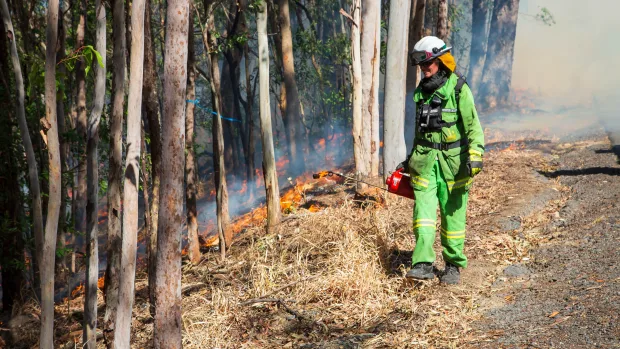In recent years, the nexus between escalating bushfire incidences and climate change has become impossible to ignore. With increasing global temperatures, we are witnessing more frequent and intense bushfires around the world, each leaving behind a trail of ecological and human catastrophe. This blog delves into how climate change is exacerbating bushfire risks and what measures can be undertaken to mitigate these dangers effectively.
The Scientific Perspective
Climate change primarily enhances bushfire risks through two key environmental changes: increased temperatures and altered precipitation patterns. The Earth’s rising surface temperatures—a direct result of heightened greenhouse gas concentrations in the atmosphere—lead to hotter and drier conditions, ideal for the ignition and spread of wildfires. Moreover, as the climate warms, precipitation patterns become more erratic, leading to prolonged drought periods interspersed with intense rainfall. While droughts dry out vegetation, making it highly combustible, heavy rains promote rapid vegetation growth which later dries out, adding more fuel to potential fires.
Impact on Bushfire Patterns
The geographical and seasonal patterns of bushfires are also shifting due to climate change. Traditionally cooler and moister regions are now experiencing fire seasons, while in traditional bushfire zones, the seasons are extending. For example, the Australian bushfire season now starts earlier and ends later than in past decades, a pattern similarly observed in the western United States and parts of Europe.
Climate Models and Risk Assessment
Utilizing sophisticated climate models is crucial for predicting future bushfire scenarios. These models simulate various future climate scenarios by considering different levels of greenhouse gas emissions and their impact on global warming. By integrating these predictions with historical fire occurrence data, scientists can create detailed risk maps. These maps are vital for regional planning, helping to identify areas most likely to experience severe bushfires and requiring enhanced preparedness measures.
Adaptive Measures for Bushfire Management
Recognizing the role of climate change in bushfire prevalence necessitates robust adaptive strategies to enhance resilience and reduce future risks:
- Strengthening Policies and Governance: Governments need to formulate and enforce policies that reduce carbon emissions and enhance landscape resilience against bushfires. This includes managing urban development to avoid high-risk areas and improving emergency response systems.
- Community Preparedness: Effective bushfire management requires active community involvement. Educating residents about bushfire risks and preparedness, developing community response strategies, and regular drills can significantly mitigate the impacts.
- Technological Innovations: Technology plays a critical role in modern bushfire management. Satellite imagery, drones, and AI for predictive analytics can greatly enhance early warning systems and fire management capabilities. These tools help in real-time monitoring and quick response, potentially saving lives and properties.
- Sustainable Land and Resource Management: Ecosystem-based management strategies such as controlled burns and the maintenance of natural firebreaks (like rivers or wetlands) can reduce fire severity. Additionally, reforestation with fire-resistant plant species can help restore and maintain the ecological balance, reducing the likelihood of catastrophic fires.
- Building Resilience through Infrastructure: Constructing fire-resistant buildings and designing landscapes to reduce fire spread in residential and commercial areas are vital. This also includes maintaining adequate clearance around properties, using non-flammable materials for roofs and siding, and implementing smart home designs that offer better protection against fires.
Expanding Global Cooperation
Global cooperation is also critical in addressing bushfire risks exacerbated by climate change. Countries can share knowledge, resources, and technology to improve fire management and suppression techniques. International collaborations can also foster the development of global standards for emissions that directly contribute to climate change, thus addressing the root cause of increased bushfire risks.
Innovative Case Studies
Highlighting successful case studies from around the world can provide valuable lessons. For instance, the FireSmart program in Canada and similar initiatives in Australia have demonstrated significant success in community engagement and risk mitigation through educational programs and community-based approaches to landscape management.
Final Thoughts
As the planet continues to warm, the linkage between climate change and increased bushfire activity becomes more evident and concerning. It is imperative that all stakeholders—governments, communities, and individuals—understand their role in mitigating bushfire risks and enhancing resilience. Through comprehensive bushfire risk assessments informed by robust climate science, proactive policy formulation, community engagement, and the embrace of technology, we can hope to safeguard our environments and societies against the escalating threat of bushfires. By addressing both the symptoms and the causes of increased bushfire risks, we can work towards a safer, more sustainable future.



